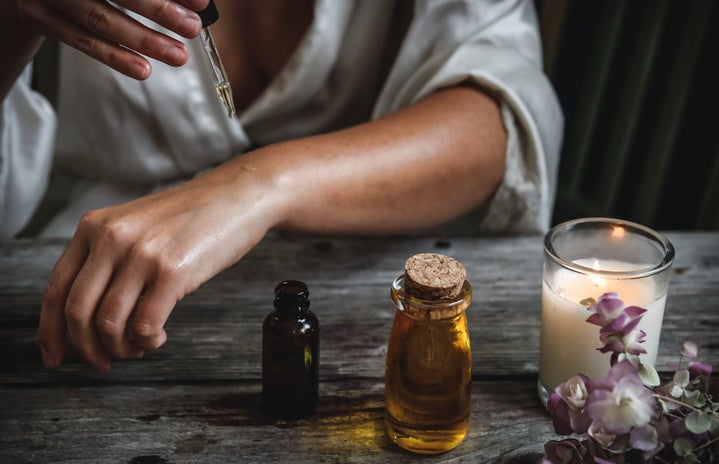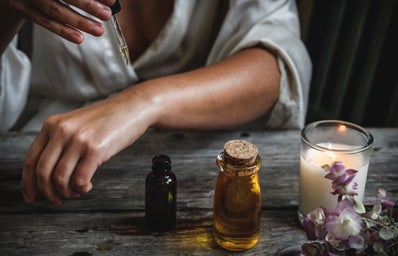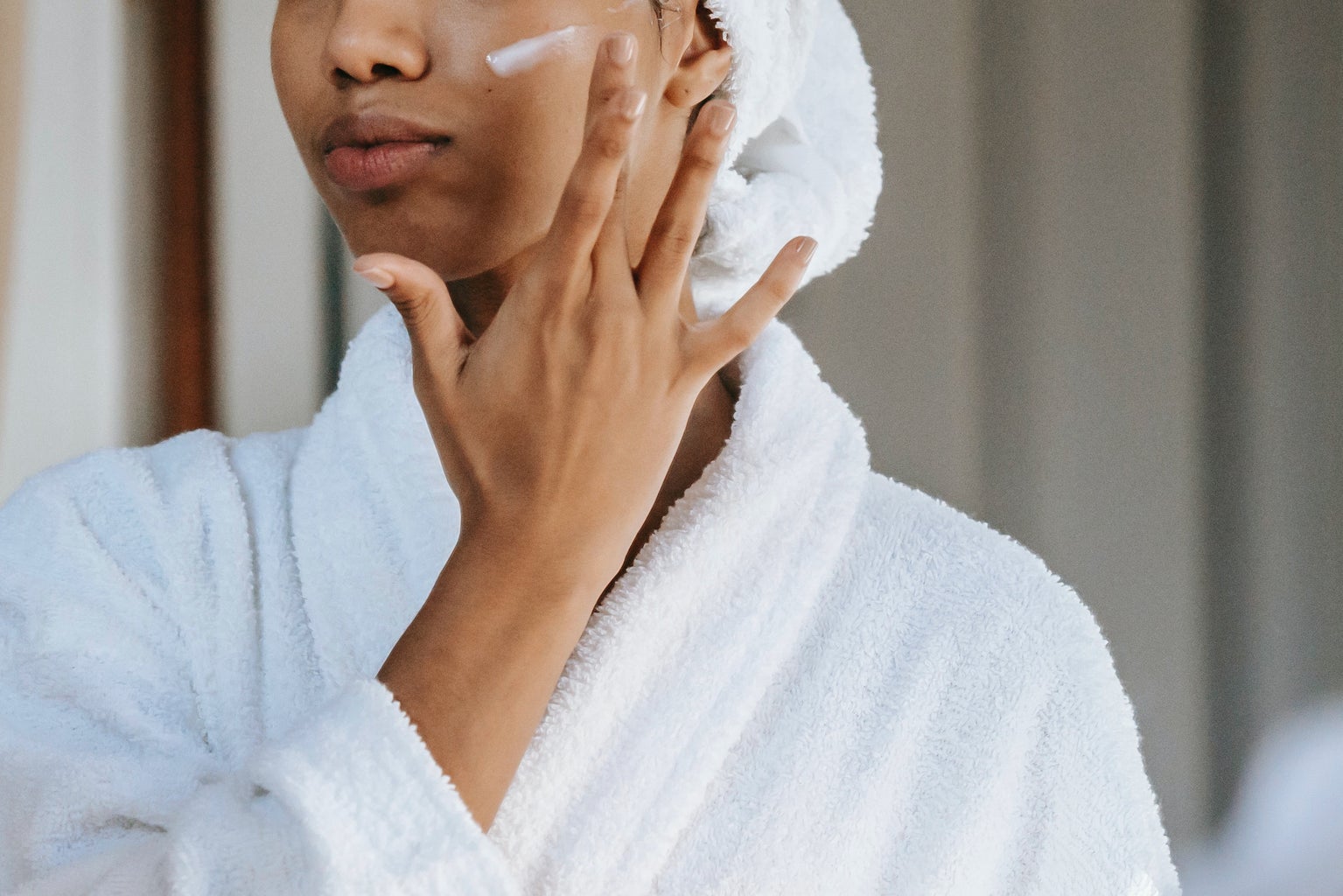It is the month of March and the warm gentle rays of the winter sun have given way to scorching heat. The connoisseurs of the sun-kissed aesthetic have vanished, turning their backs on the summer sun. The premises of my all-girls college is abuzz with lamenting complaints about the tan they are going to acquire. Various methods are employed to avoid this dreaded fate of getting tanned: sunscreens, umbrellas, covering the face with dupattas, light full sleeves and hiding from the sun under shady trees and in covered corridors. The tan must be avoided at all costs. And if by chance, as is often inevitable in Indian climate, one is to acquire a tan the socially mandated response is to deplore and grumble about it.
Yours truly has managed to acquire a healthy tan early on in the season this time as a result of NCC practice in the outdoors. Being tan made me more aware than usual of the comments by others around me about skin tone. Ironically, or maybe rather obviously, those with the palest of pale perfect complexions are the most afraid of getting tan. While there have never been any disparaging remarks directed at me, the frequently expressed concerns with maintaining a light skin tone tend to subconsciously become a part of one’s psyche.
By the end of the week, it was enough for me to stop in front of a mirror at home and nit-pick the brown sun-kissed sheen on my own skin. It made me feel conscious about sporting a tan and had me questioning the general attitude of disregard that I had had towards it since my school days.
In India, we treat milky white skin as some sort of a prized possession, to be raised on a pedestal and guarded against the villainous sun. In contrast, dark or tanned skin is frowned upon and is often seen as a marker of lack of care or something inherently bad. A very clear hierarchy of color exists. It is a rather curious beauty standard to hold, as most of us in the country are naturally born with a darker, wheatish or dusky skin tone. Why is something as natural as some extra melanin so looked down upon and avoided?
The scorching sun and dust of the Indian clime are not exactly optimal for maintaining flawless skin either. Those with outdoor jobs and those who commute every day to work or college will find exposure to the elements and pollution almost inevitable. Many went down the skin care route during lockdown but most of us no longer have that very controlled environment or the time to regularly follow these extensive routines. It is not possible to isolate ourself completely and even if we could, the question arises, why would we limit our mobility and to what end?
Tan is simply a sign of adaptation to the local climate: an automatic defense mechanism of the skin to protect against the sun, as opposed to a reddened sun burn that a lighter skin tone is susceptible to. Why can’t something so natural and common be seen as a sign of beauty?
What we must recognize is that having tanned skin is not just a violation of the prevailing beauty standard but it also has coded cultural implications. Being tanned means you are someone with a profession that requires you to be out working in the sun, such as a peasant or a manual laborer. Manual labor in itself is something which is considered as inferior in our society. Tanned skin implies you probably come from a lower social stratum and don’t have a cushy white-collar job where you can stay indoors.
Tanned skin is commonly regarded as ‘unladylike’ and ‘unfeminine’ which brings in the issue of gendered class differences. While in earlier times ‘ladies’ of the upper classes from wealthy families could stay at home with no demands upon them, working women from the lower strata of society couldn’t enjoy the same comforts and were compelled to step outside to earn their livelihoods. Fair skin was and still is an indication of class privilege. (‘Upper’ class men on the other hand were not looked down upon for their tan as it was the side effect of the outdoors and playing sports was and continues to be an encouraged masculine pursuit.)
Having a darker skin tone in India comes with caste implications. Lighter skin is associated with ‘upper’ caste groups such as Brahmins and Kshatriyas whereas dark skin is associated with belonging caste groups ‘lower’ in the antiquated hierarchy.
The colonial mindset, a leftover legacy of British rule, also plays big part in our aversion to tanned skin. Our internalized racism manifests itself in our desire to imitate the powerful and ‘superior’ white sahibs while degrading our own brown skin tone. While the colonizers may now be gone, the attitude favoring light skin still remains.
In ironic contrast, in Western nations having a tan is currently in vogue. This is because of a different economic setup. The poor usually work in factory production post-industrialization and factories are covered buildings. Having a tan in this kind of society is an indicator that your family is rich enough to afford the luxury of visits to the beach. The preference for tans is so ingrained in the social fabric that fake tanning salons and products like tanning creams and sprays are widely available.
In juxtaposition to this, fairness treatments find much popularity in India and South Asia at large. A tan is something to be cured by applying various commercial and homegrown remedies such as packs, lotions and creams. Fairness creams are another can of worms in themselves. They prey on women’s – and now even men’s- insecurities to compel them to use these products. Fairness cream advertisements depict darker skin as not only visually unappealing but also an obstacle to life chances and opportunities. We can see here as socio-cultural context changes so does the meaning of the tan.
Its meaning also varies over time within the same society. In the ancient Indian text Mahabharata, we see two central characters: Draupadi who is considered a beauty worth starting wars over and the Lord Krishna, an avatar of the god Vishnu – both are dark skinned and regarded as beautiful. One of Draupadi’s many names is Krishnaa. In fact, the word ‘Krishna’ originates from the Sanskrit word Kṛṣṇa, which is primarily an adjective meaning ‘black’, ‘dark’, ‘dark blue’ or ‘the all attractive’.
Darker skin is not a feature which is universally considered inferior due to some inherent biological preferences, rather it is all a matter of learned bias through our social upbringing; the attitude towards it varies from society to society and over the course of time.
Our aversion to tanned skin is deep rooted in our society, passed on over the generations in the form of disapproval expressed through the wrinkled brows and admonitions of concerned mothers and grandmothers. Fair skin is not simply an aesthetic preference, but a symbol heavily laden with gender, class and caste labels and expectations.
I personally have arrived at the conclusion to wear my tan with confidence, free of worries over what others might think and from the rigid and irrational standards society expects us to conform to.




